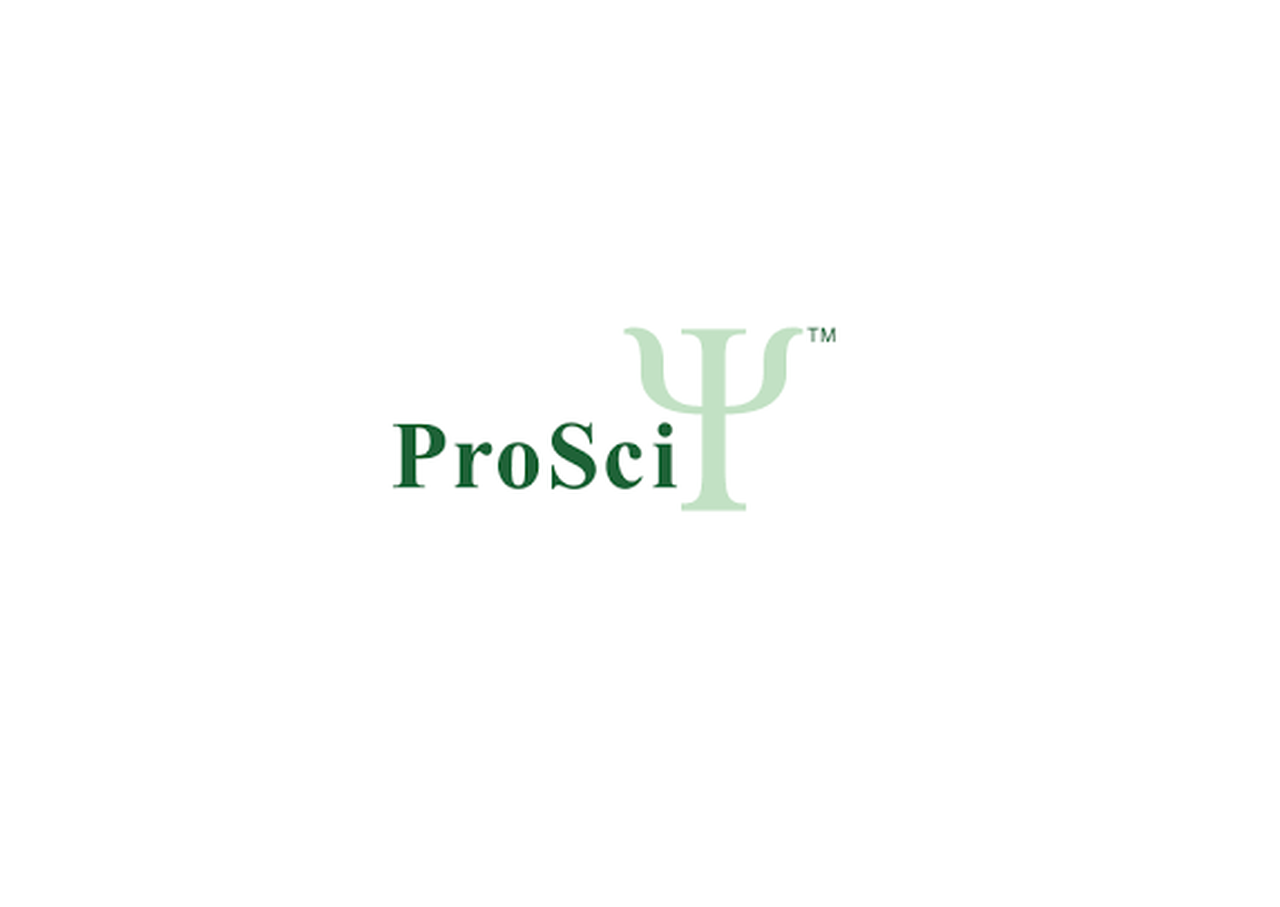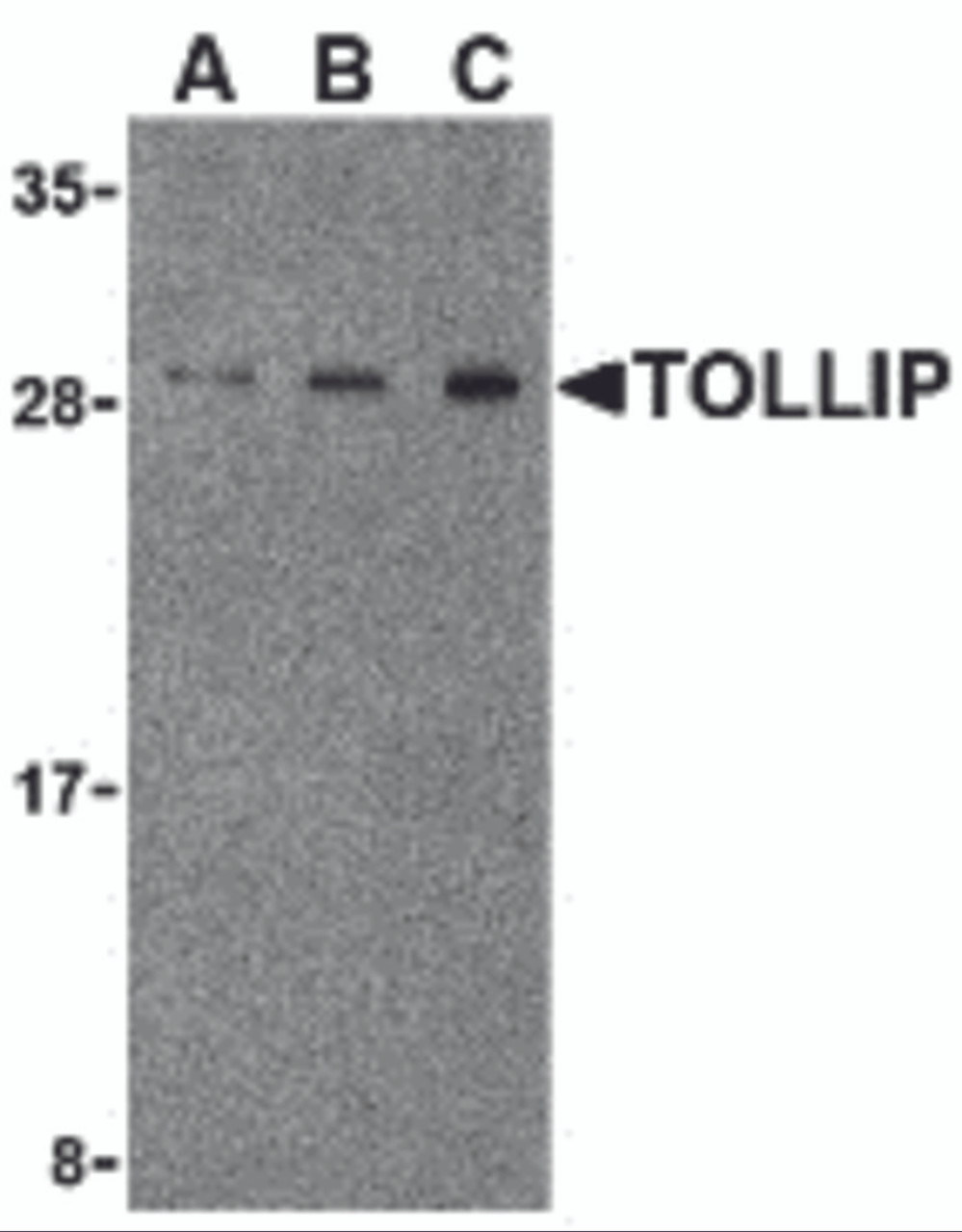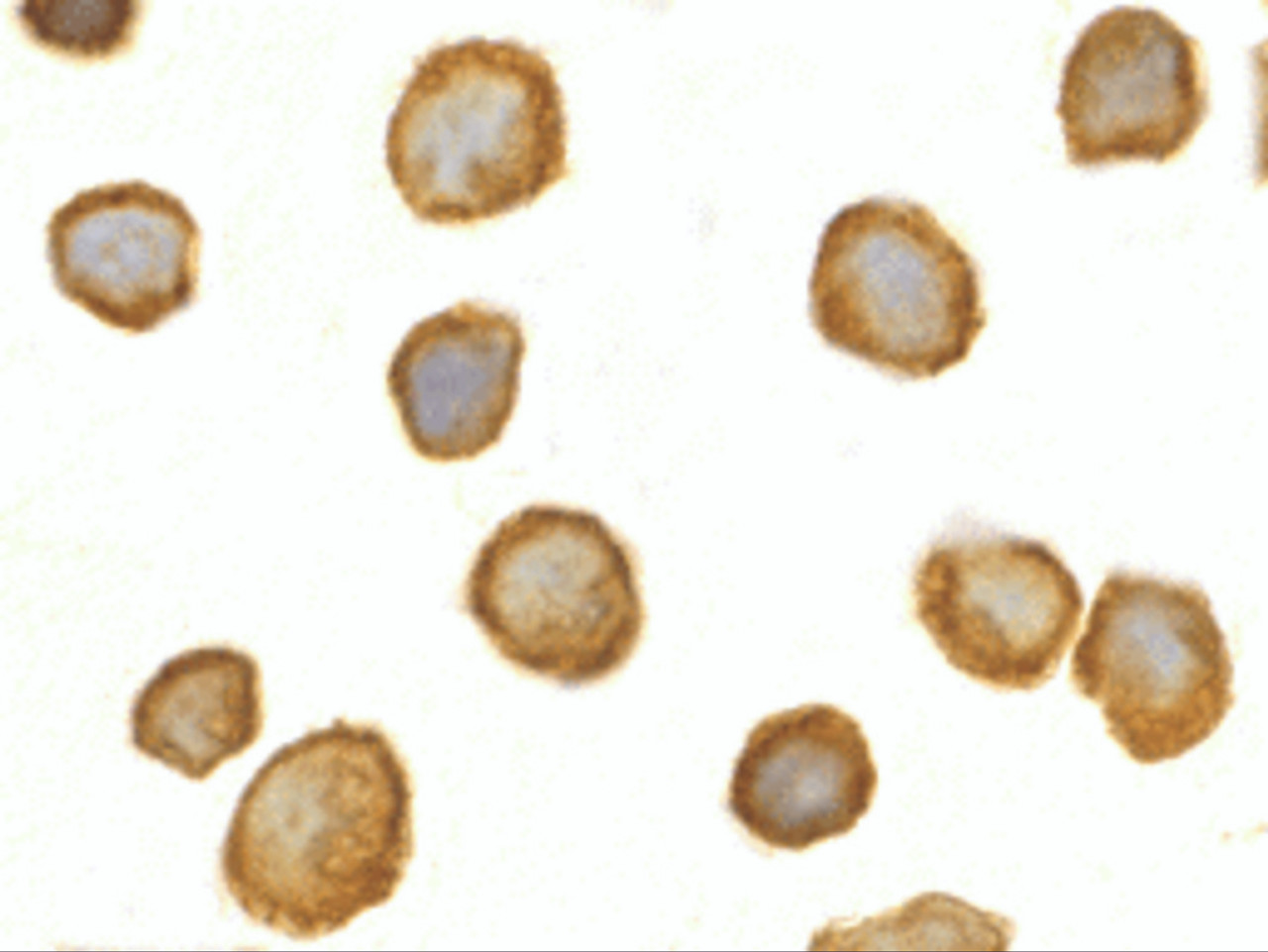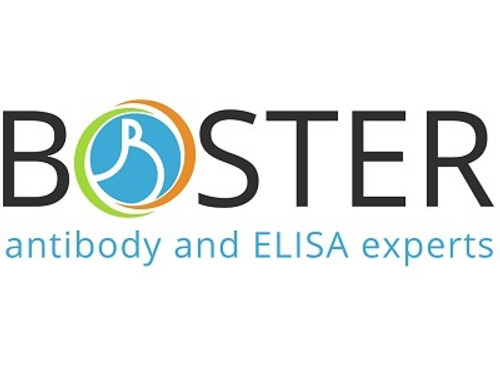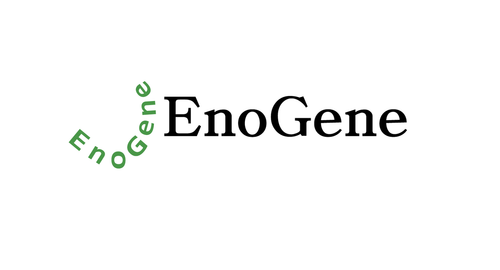Product Description
TOLLIP Antibody | 3743 | ProSci
Host: Rabbit
Reactivity: Human, Mouse, Rat
Homology: Predicted species reactivity based on immunogen sequence: Bovine: (100%) , Chicken: (100%)
Immunogen: TOLLIP antibody was raised against a 16 amino acid synthetic peptide from near the center of human TOLLIP.
The immunogen is located within amino acids 70 - 120 of TOLLIP.
Research Area: Signal Transduction
Tested Application: E, WB, ICC
Application: TOLLIP antibody can be used for the detection of TOLLIP by Western blot at 0.5 - 2 μg/mL. Antibody can also be used for immunocytochemistry starting at 2 μg/mL.
Antibody validated: Western Blot in rat samples and Immunocytochemistry in human samples. All other applications and species not yet tested.
Specificiy: N/A
Positive Control 1: Cat. No. 1463 - Rat Brain Tissue Lysate
Positive Control 2: Cat. No. 1208 - THP-1 Cell Lysate
Positive Control 3: Cat. No. 17-008 - THP-1 Cell Slide
Positive Control 4: N/A
Positive Control 5: N/A
Positive Control 6: N/A
Molecular Weight: N/A
Validation: N/A
Isoform: N/A
Purification: TOLLIP Antibody is affinity chromatography purified via peptide column.
Clonality: Polyclonal
Clone: N/A
Isotype: IgG
Conjugate: Unconjugated
Physical State: Liquid
Buffer: TOLLIP Antibody is supplied in PBS containing 0.02% sodium azide.
Concentration: 1 mg/mL
Storage Condition: TOLLIP antibody can be stored at 4˚C for three months and -20˚C, stable for up to one year. As with all antibodies care should be taken to avoid repeated freeze thaw cycles. Antibodies should not be exposed to prolonged high temperatures.
Alternate Name: TOLLIP Antibody: IL-1RAcPIP, Toll-interacting protein
User Note: Optimal dilutions for each application to be determined by the researcher.
BACKGROUND: TOLLIP Antibody: Toll-like receptors (TLRs) are evolutionarily conserved pattern-recognition molecules resembling the toll proteins that mediate antimicrobial responses in Drosophila. These proteins recognize different microbial products during infection and serve as an important link between the innate and adaptive immune responses. The TLRs act through adaptor molecules to activate various kinases and transcription factors so the organism can respond to potential infection. These adaptor molecules include TOLLIP, MyD88, and TRIF. TOLLIP associates directly with TLR2 and TLR 4, acting as an inhibitor to TLR activation. This negative regulation of TLR signaling may serve to limit the production of proinflammatory mediators during infection and inflammation.
 Euro
Euro
 USD
USD
 British Pound
British Pound
 NULL
NULL

